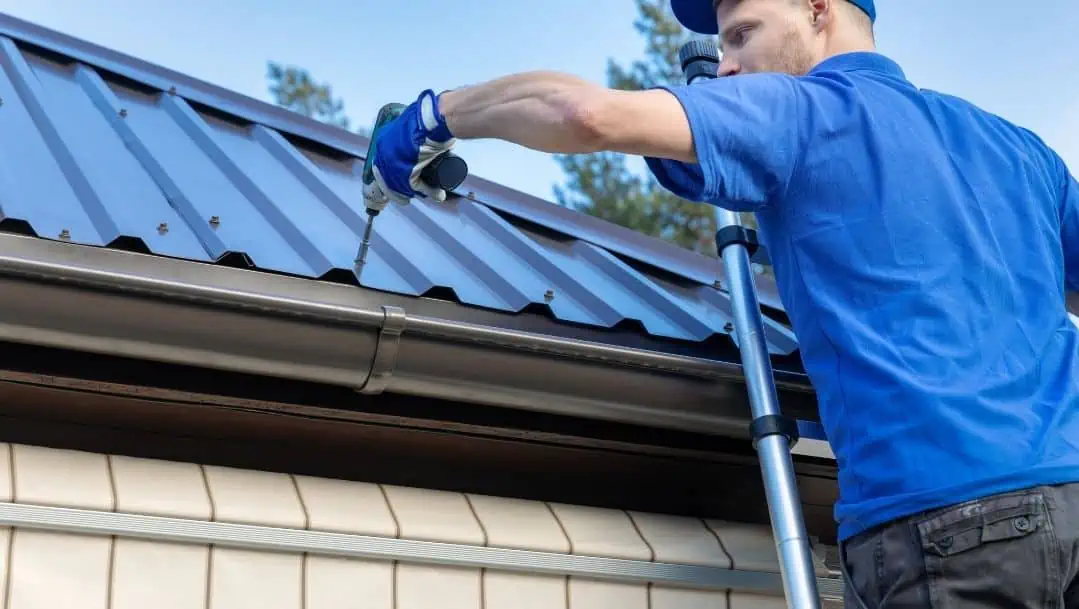Installing new gutters might not sound as exciting as a kitchen remodel or a new deck, but it’s one of the most critical upgrades for protecting your home. A well-designed gutter system shields your foundation, siding, landscaping, and roof from water damage—making it a smart investment for any homeowner. If you’re planning your first gutter installation, knowing what to expect can make the process smoother, more cost-effective, and better suited to your property’s needs.
Gutters do more than move rainwater. When installed correctly, they help preserve your home’s structure and appearance by managing runoff before it becomes a problem. But before installation begins, there are a few key things to consider.
Understand Why Gutters Matter
The primary function of a gutter system is to collect water from your roof and direct it away from the foundation of your home. Without gutters, rainwater can pool around the base of your house, leading to erosion, cracked foundations, basement leaks, and mold.
Even minor overflow can damage fascia boards, stain siding, and destroy landscaping. By installing gutters, you’re taking a preventative step that helps avoid future repairs and adds long-term value to your property.
Professionals like Ray Seamless Gutters understand how essential the correct setup is to maximizing this protection. Every component of the system must be designed with your home’s unique features in mind.
Evaluate Your Roofline and Drainage Needs
Before installing gutters, it’s important to assess how your roof collects and sheds water. Some roofs have multiple slopes or valleys that channel runoff toward specific points. Others have large surface areas that create heavy flow during storms.
A thorough evaluation includes:
- Measuring roof square footage
- Identifying valleys and runoff concentration areas
- Checking fascia integrity
- Reviewing current drainage patterns
These details determine where gutters should be placed and how many downspouts are needed. Proper planning ensures water doesn’t pool in the wrong places or overwhelm one part of the system.
Choose the Right Gutter Material
Gutters come in various materials, each offering its own blend of durability, appearance, and cost. Some of the most common options include:
- Aluminum: Lightweight, rust-resistant, and widely used due to its affordability and flexibility.
- Copper: Offers a high-end look and exceptional longevity but comes with a higher price tag.
- Vinyl: Easy to install and low in cost, but less durable and prone to warping in extreme temperatures.
- Steel: Strong and long-lasting, but heavier and more susceptible to rust over time.
Consider what makes the most sense for your home’s aesthetic, your budget, and your local climate. If you’re in an area with heavy rainfall or snow, durability should be a top priority.
Understand Seamless vs. Sectional Gutters
One of the key decisions in gutter installation is choosing between seamless and sectional systems. Seamless gutters are custom-cut to the exact length of your roofline and have fewer joints, which means fewer places for leaks to occur.
Sectional gutters, by contrast, are pieced together and joined at seams. These seams can become weak points over time, especially if not sealed correctly.
Seamless gutters are typically made on-site using a specialized machine. Companies like Ray Seamless Gutters LLC specialize in this type of installation, ensuring a precise fit with a clean appearance.
Pick the Right Size and Style
Gutters aren’t one-size-fits-all. The size you need depends on your home’s roof area and the average amount of rainfall in your region. Most residential systems use 5-inch or 6-inch gutters, but larger homes or steeper roofs may require oversized gutters for better capacity.
The style of the gutter also impacts its function and appearance. Popular styles include:
- K-style: Shaped like crown molding, these are the most common and offer good volume.
- Half-round: Smooth and rounded, these are often used in historic or upscale homes.
- Box gutters: Built into the roofline, typically found on commercial buildings or older architecture.
Work with your installer to determine the best style and size for your home’s structure and water management needs.
Downspout Planning Matters
Gutters are only part of the system—downspouts do the work of moving water to the ground and away from your home. Poor placement or undersized downspouts can cause water to back up in the gutters, overflow, or even freeze in winter.
Some planning tips:
- Place downspouts at each end of long gutter runs.
- Avoid routing water toward walkways or driveways.
- Use splash blocks or underground extensions to carry water further from the foundation.
- Match downspout color to your siding or trim for a subtle appearance.
The number, size, and placement of downspouts directly impact the effectiveness of your entire system.
Don’t Forget About Gutter Guards
While not always installed at the same time, gutter guards (or covers) are worth considering. These devices sit on top of the gutters and help prevent leaves, pine needles, and other debris from clogging the system.
Adding gutter guards during your gutter installation can reduce future maintenance and help the system perform better during storms. They are especially useful in areas with lots of trees or seasonal leaf drop.
If you plan to include them, make sure your installer accounts for the type and fit of the guards during the initial planning stage.
Consider Local Building Codes and HOA Guidelines
Before installation begins, check with your local building department or homeowners association. There may be specific regulations regarding:
- Placement of gutters and downspouts
- Drainage redirection (to prevent runoff into neighboring properties)
- Exterior color matching
- Use of underground drainage systems
Following local guidelines prevents future headaches and ensures your project meets all necessary requirements.
Prepare for Installation Day
Once your materials and plan are finalized, the installation itself usually takes one to two days, depending on the size of the home and complexity of the design.
To prepare:
- Clear the perimeter of your home of any objects or furniture
- Trim back overhanging branches
- Make arrangements to keep pets and children indoors during the work
- Communicate access needs with the installation crew
After installation, inspect the system together with the team. This ensures everything is in place, and gives you the opportunity to ask questions about care or future maintenance.
Maintenance Planning for Long-Term Performance
Even with a perfect gutter installation, maintenance is still required. Gutters should be cleaned and inspected at least twice per year—more often if your home is surrounded by trees or if your region experiences heavy seasonal storms.
Look for:
- Clogs in gutters or downspouts
- Sagging or loose sections
- Water pooling around the foundation
- Signs of rust or corrosion
Regular upkeep extends the life of your gutters and protects the value of your home.
Final Thoughts
Gutter installation might not grab attention like other home improvements, but it’s one of the most valuable upgrades you can make. From protecting your foundation to reducing water damage and soil erosion, a reliable system keeps your home safer and more efficient.
By working with a trusted team like Ray Seamless Gutters LLC and carefully considering your home’s unique layout, style, and climate, you’ll end up with a solution built for performance and longevity.
Read More From Techbullion



































